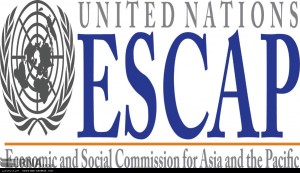 Tehran, Dec 19, IRNA -- Growth will remain subpar in developing Asia-Pacific countries in 2014, affected by slow recovery, policy uncertainty and protectionism in developed countries, as well as domestic structural impediments, such as growing inequality, according to the latest United Nations macroeconomic projections for the region released in Bangkok on Thursday.
Tehran, Dec 19, IRNA -- Growth will remain subpar in developing Asia-Pacific countries in 2014, affected by slow recovery, policy uncertainty and protectionism in developed countries, as well as domestic structural impediments, such as growing inequality, according to the latest United Nations macroeconomic projections for the region released in Bangkok on Thursday.
According to the United Nations Information Center, Asia-Pacific developing economies are forecast to grow 5.6 per cent in 2014, up from 5.2 per cent this year, but lower than the 6.0 per cent growth earlier forecast for 2013, says the Economic and Social Survey of Asia and the Pacific 2013: Year-end Update, published by the United Nations Economic and Social Commission for Asia and the Pacific (ESCAP).
ESCAP reveals that the three years between 2012 and 2014 mark the first time in at least two decades that developing Asia-Pacific economies are growing at less than 6 per cent annually, averaging 5.4 per cent compared to 8.4 per cent during the pre-crisis years of 2002-07.
While launching the Year-end Update, Dr. Noeleen Heyzer, United Nations Under-Secretary-General and ESCAP Executive Secretary explained: “The economies of Asia and the Pacific are at a turning point. The manner in which the current transition is managed will have a long-term impact on the region’s inclusive and sustainable development path.”
The key economies of China, India and Indonesia with large domestic markets have grown moderately in 2013 after recent years of strong performance, although China’s economy is still growing relatively fast at 7.5 per cent in 2013 and is projected to expand by 7.3 per cent in 2014.
India’s growth is expected to rebound in 2014 to 6.0 per cent after remaining unchanged at around 5.0 per cent in the preceding two years.
Indonesia has recorded the lowest growth in recent years, estimated at 5.7 per cent in 2013 after expanding at 6.2 per cent in 2012.
Growth dynamism in other major economies with significant domestic markets such as Malaysia and Thailand has also been affected, with GDP growth in the two countries slowing down to 4.5 and 3.2 per cent, respectively, in 2013, from 5.6 and 6.4 per cent, respectively, in 2012.
Expected major monetary policy developments in the United States could also affect growth in the region. ESCAP estimates show that a cutback in quantitative easing by the United States Federal Reserve, known as ‘tapering’, could slash GDP levels in Malaysia, the Philippines, the Russian Federation and Thailand by up to 1.2-1.3 per cent in 2014.
“Asia-Pacific developing economies face the prospect of a ‘new normal’ of lower growth in the coming years; underlining the need for forward-looking macroeconomic policies and intraregional cooperation,” said ESCAP’s Director of Macroeconomic Policy and Development Division, Mr. Anisuzzaman Chowdhury.
The persisting slowdown in developed economies and limited progress in multilateral trade deals has seen the rise of protectionist policies in developed countries, which are significantly affecting Asia-Pacific growth.The Year-end Update estimates that the restrictive trade policy measures in developed countries kept out $62 billion worth of regional exports in 2012 and 2013, translating into a loss in developing Asia-Pacific GDP of over 0.4 per cent.
The Year-end Update emphasizes that improved access to decent and productive employment is key to reducing rising economic and social inequality, which is a major constraint to realizing the full economic potential of the region and is central for the United Nations post-2015 development agenda.
The progress in employment creation and job quality has been decidedly mixed in 2013. Indonesia, Malaysia, Sri Lanka, the Philippines and Vietnam reported job increases totaling over 4.3 million additional jobs.
However, the majority of workers in developing Asia-Pacific countries remain employed in low quality informal sector jobs.
“Inequality not only threatens social cohesion, but is also a challenge to sustaining the region’s economic dynamism,” said Dr. Heyzer. “ESCAP findings show that higher income inequality adversely affects domestic demand and contributes to balance-of-payments deficits as well as higher household debts.”
The vulnerability of the region to these emerging challenges, as well as to risks of natural disasters and political turmoil, requires Asia-Pacific developing countries to address past policy inadequacies that have contributed to growing structural impediments. This means bridging wide development gaps underpinning macroeconomic weaknesses.
The Year-end Update reiterates the need for productive public spending to promote inclusive and sustainable development, targeting the majority rural population in the region with an estimated 762 million people dependent on agriculture for a livelihood.
The region is moving on this path with China, India, Indonesia, Republic of Korea, Thailand and Vietnam having initiated targeted policies, such as upward adjustments of minimum wage and programmes to enhance food security and social protection, for promoting inclusive and sustainable development.
During the Year-end launch, the Executive Secretary also announced that online, digitized versions of the Surveys dating back to 1947 will now be available on the ESCAP website.
“The Surveys are truly reflections of past, present and future development issues in the Asia and Pacific region,” said Dr. Heyzer. “This historical project is a fascinating journey of intellectual introspection and self-discovery down the decades.”
By IRNA
The Iran Project is not responsible for the content of quoted articles.

 QR code
QR code